- Overview
- Trip Outline
- Trip Includes
- Trip Excludes
- Gallery
- Reviews
- Booking
- FAQ
Spantik Expedition 7027-M (Golden Peak)
The Spantik Expedition offers a unique opportunity to ascend beyond 7,000 meters, presenting a relatively straightforward and safe mountaineering experience within the stunning Karakoram range. Our expedition takes on the southeast ridge of Spantik Peak, starting from the picturesque Shigar Valley. Spantik, standing at an elevation of 7,027 meters, is situated in a region distinct from the usual trekking and expedition routes in the Karakoram.The Spantik Expedition offers you the chance to ascend one of the most accessible 7000-meter peaks in the majestic Karakoram ranges of Pakistan
Spantik Peak is an ideal choice for mountaineers who have previously undertaken substantial treks in the Karakoram or Himalayas or have conquered peaks exceeding 6,000 meters in height. It serves as a vital climbing adventure in the Karakoram and serves as a valuable stepping stone for those aspiring to scale 8,000-meter peaks. Spantik Peak is renowned in the mountaineering world as a training ground for higher-altitude summits, owing to its comparatively lower technical difficulty and accessible climbing approach. It offers an excellent introduction to the grandeur of the Karakoram region.
Notably, the Spantik Expedition stands out as a cost-effective option among expeditions in the Karakoram. Furthermore, the journey to the base camp is incredibly rewarding, providing a glimpse of the enchanting Karakoram valleys, their inhabitants, their rich culture, and pristine mountains in their unspoiled splendor. Compared to other climbing expeditions, Spantik Peak is characterized by its relatively moderate technical challenge and is classified as a Grade II climb in the realm of mountaineering.
In various segments of the route connecting the different camps, safety measures are implemented through the installation of fixed cords, ensuring a secure passage for climbers during their ascent and descent. The climb towards Camp 2 (C2) and Camp 3 (C3) offers a truly awe-inspiring journey, with each camp strategically positioned on a mini-summit along the southeastern ridge, affording mountaineers panoramic, 360-degree vistas. The allocation of responsibilities for managing high-altitude camps follows a rotational system, involving the active participation of mountaineers, the team, and the guide (or guides).
As climbers progress to Camp 3, there remains a challenging 950-meter stretch of uneven terrain that must be conquered within a single day to reach the summit successfully. The process of traversing between camps plays a vital role in acclimatization, a crucial factor contributing to the achievement of the climbing objective in most instances. Additionally, the collective dismantling of camps is orchestrated under the expert guidance of the lead guide, emphasizing the collaborative nature of this crucial task.
In summary, the Spantik Peak Expedition is a remarkable opportunity for mountaineers to explore the breathtaking Karakoram region, gain valuable experience at high altitudes, and prepare for more significant 8,000-meter summits. Its low technical difficulty, affordability, and the enriching trek to the base camp make it a standout choice for adventurers seeking a unique and accessible mountaineering experience in the heart of the Karakoram range.
Spantik Peak Climbing Info
Our Spantik Expedition takes place on the southeastern aspect of the mountain, a route renowned for its simplicity and safety. This particular face of Spantik Peak primarily features substantial snow cover with only a few technical segments, devoid of significant hazards. Situated to the south of the Hisper Glacier, Spantik Peak presides over the Chogolungma Glacier, straddling the border of the Shigar and Nagar Valleys in Gilgit Baltistan.
To embark on the journey to Spantik Peak's base camp, the adventure commences in the Shigar Valley, with a scenic 6 to 7-hour jeep ride from Skardu city to Armando village. From Arando village, the trek unfolds through a dynamic terrain, encompassing glaciers and rocky stretches of the Chogolungma glacier, eventually leading to the breathtaking Spantik base camp. This location is surrounded by a stunning mountain panorama, replete with numerous peaks soaring beyond the 5,000-meter mark. Our base camp for Spantik will be established at an elevation of 4,360 meters, with Camp I positioned at 5,100 meters, Camp II at 5,500 meters, and Camp III at an altitude of 6,250 meters.
For added safety during the more technical stages of the ascent, fixed ropes have been installed above the mountain's surface, ensuring secure passage for climbers.
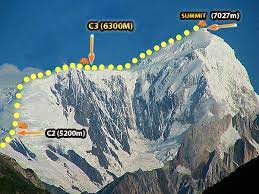
Climbing History
In 1955, Spantik Peak was first conquered by a German expedition led by Karl Kramer. Many climbers opt for the southeast ridge route, which was initially attempted by the Bullock Workman team back in 1906.
This particular route presents a challenging climb, spanning 2,700 meters over a distance of 7.6 kilometers. The landscape along this ridge varies from rocky sections to snowy, icy, and scree-covered terrain. The slopes on this route are mostly gentle, with a few steeper parts.
In July 2011, an Australian-Pakistani expedition, led by Lt Col Abdul Aziz from the Army High Altitude School Rattu, successfully reached the summit of Spantik Peak. The peak can be approached from both the Nagar Valley and the Baltistan side.
The very first expedition was in 1988, involving six Pakistani Army personnel and a German team. Captain (now Brigadier) Muhammad Moiz Uddin Uppal was the first Pakistani to reach the summit. Another expedition called the China-Pakistan Friendship Expedition also scaled Spantik Peak. The team reached the summit on July 15, 2018.
Uzma Yousaf achieved a remarkable feat on August 2, 2017, becoming the first Pakistani woman to climb Spantik Peak, which stands at 7,027 meters. She approached the peak from the Chogholungma glacier above Arandu in the Basha Valley, in the Shigar district of Gilgit Baltistan.
On July 17, 2019, a 10-year-old Pakistani girl named Selena Khawaja from Abbottabad reached the summit of Spantik Peak. This accomplishment made her the youngest person to scale Spantik and any peak over 7,000 meters anywhere in the world.
Other 6k Meters Peaks Expedition
You may like and join our 6k & 7k m peaks expedition. Khosar Gang and Spantik is known as beginners peaks. Packages is listed in table below with cost.
| Expedition Below 7k m | Cost (USD) | Cost (Euro) |
| Liala Peak Expedition (6,090 m) | 3,500$ | 3,500€ |
| Trango Tower Expedition (6,286 m) | 3,550$ | 3,490€ |
| Khosar Gang Expedition (6,060 m) | 2,100$ | 2,000€ |
Spantik Expedition Cost
Our services are available for Spantik Expeditions' Base Camp. Alpinists can select for a solo tour upon request or join scheduled departures at a fixed cost of USD 5,000. Our main focus is organizing private adventures with exclusive discounts for businesses, organizations, and groups.
| Solo | 2-4 members | More then 4 |
| $8000 | $6000 | $5000 |
Inspired by the intricacies of our Spantik Peak Expedition, are you prepared to take on an amazing climbing adventure? Contact us right now. Our knowledge of the mountains has resulted in many happy customers thanks to our expert training counsel, equipment recommendations, logistical support, committed staff, and more. We are available to respond to any of your questions.
For Booking: Private Groups Click Here
BOOK NOW
Spantik Expedition – Dates And Cost 2024
| Start | End | Cost (Usd) | Availability | Registration |
| 1 July | 28 July | $ 5,200 | Available | BOOK NOW |
| 15 July | 12 August | $ 5,200 | Available | BOOK NOW |
| 1 August | 28 August | $ 5,100 | Available | BOOK NOW |
| 15 August | 11 September | $ 5,220 | Available | BOOK NOW |
Climbing Details For Spantik Peak
Camp 1 (5100m), 5 hours: The journey from the base camp commences on grassy terrain, transitioning into an ascent along a sturdy rocky ridge. Camp 1 is positioned just before the snow-covered expanse, representing the final opportunity to don trekking boots.
Camp 2 (5650m), 4-5 hours: The ascent from Camp 1 to Camp 2 primarily entails relatively effortless walking on moderately sloped snowfields, with occasional traverses over crevasses.
Camp 3 (6295m), 5-6 hours: Nestled on a spacious plateau, Camp 3 provides breathtaking vistas of the Hindu Kush and Karakoram ranges. The climb from Camp 2 to Camp 3 encompasses the steepest slopes, ranging from 30 to 45 degrees, where a fixed line will be installed for added safety during both the ascent and descent. Ascending and descending this segment involves the use of a jumar and belay device.
Summit: The final stretch from Camp 3 to the summit of Spantik generally requires approximately 7 to 10 hours and follows an alpine-style approach. The expedition team is organized into rope teams to tackle this part of the ascent.
SPANTIK PEAK CLIMBING PACKING LIST
Clothes
1 pair of pants that maybe convert to shorts
1 pair of shorts
1 Warm or thicker pair of hiking pants
1 Long sleeve quick-dry shirt
1 Long-sleeve thermal shirt
2 Short-sleeve t-shirts
1 Thermal long underwear
4 pairs of quick-dry underwear
1 Lightweight down jacket
1 Heavy-duty summit down jacket
1 Beanie
1 Cap
Gear
Sunglasses
1 Neck Buff
Gloves
Hiking boots
Microspikes
Headtorch
Helmet
Crampons
6000-8000m climbing boots
Descender
Carabiners
Warm mitts or high-altitude gloves
Glacier glasses
Harness
Gaiters
1 pair of warm summit socks
3 pairs of regular socks
Sunscreen
Trekking poles
Water filter
Powerbank
Camera
Travel Insurance
Remember to carry a duplicate of your personal travel insurance information, including essential contact numbers. It is your duty to verify that you possess the suitable insurance coverage for this expedition, encompassing provisions for medical evacuation and extending to the highest elevation reached during this journey.
lets go together.....
For more details please contact us..
Mail : info@imaginekarakorumtours.com
WhatsApp : +92 0344 6253054
Social Media : Facebook Instagram Twitter
Details Itinerary
Day-01: Islamabad and Rawalpindi
Upon your arrival at Islamabad airport, we will greet you and arrange your transfer to the hotel. In the afternoon, embark on a city tour of Islamabad and Rawalpindi, encompassing renowned sites such as the Faisal Mosque, Shakar Parian, Pakistan Monument, Damen Koh, Lok Versa Museum, the historic Rawalpindi Old Bazaar, and Raja Bazaar.
Elevation: 540 meters.
Lodging: Hotel
Meals: Breakfast, Lunch, Dinner
Day-02: Drive from Islamabad to Chilas
Commence your journey with a 6-7 hour drive covering 239 kilometers from Islamabad to Naran. Following lunch, resume your drive for approximately 3-4 hours, spanning 113.3 kilometers to reach Chilas via the Babusar Pass, situated at a remarkable altitude of 4,173 meters (13,691 feet) above sea level. This pass represents the highest point within the Kaghan Valley, Pakistan, serving as a vital link connecting the Kaghan Valley via Thak Nala to Chilas on the Karakorum Highway. Notably, it boasts a collection of famous hairpin turns, making it one of the world's renowned mountain roads.
or
In flights to skardu from islamabad
Elevation: 1,265 meters.
Lodging: Hotel
Meals: Breakfast, Lunch, Dinner
Day-03: Drive from Chilas to Skardu
Drive to Skardu via the Indus River, an 8-9 hour journey covering 290 kilometers. Along the way, pause at the junction of the Karakoram, Himalaya, and Hindukush mountain ranges. Also, stop at Thalichi for a photo opportunity with Nanga Parbat at 8,126 meters.
Altitude: 2,228 meters.
Accommodation: Hotel
Meals: Breakfast, Lunch, Dinner.
Today we take the spectacular drive by jeeps to Aarandu. Arandu is last village and starting point of our trek.
Altitude: 2,770m
Accommodation: Camping
Meals: Breakfast, Lunch, Dinner
Trek from Arandu to Chogo Brangsa 6-7 hours.
Altitude: 3,322m
Accommodation: Camping
Meals: Breakfast, Lunch, Dinner
Trek to from Chogo Brangsa to Bolocho camp 5-6 hours.
Altitude: 3,800m
Accommodation: Camping
Meals: Breakfast, Lunch, Dinner
Hike to the Spantik base camp, a journey lasting 5-6 hours.
Elevation: 4,300 meters
Lodging: Camping
Meals: Breakfast, Lunch, Dinner
A 17-day itinerary for ascending Spantik, which stands at an elevation of 7,027 meters.
Lodging: Camping
Meals: Breakfast, Lunch, Dinner
Descend to Bolocho, a trek spanning 4-5 hours.
Elevation: 3,800 meters
Lodging: Camping
Meals: Breakfast, Lunch, Dinner
Continue your descent to Arandu, a trek lasting 4-5 hours.
Elevation: 2,770 meters
Lodging: Camping
Meals: Breakfast, Lunch, Dinner
Return to Skardu with a 6-7 hour drive.
Elevation: 2,228 meters
Lodging: Hotel
Meals: Breakfast, Lunch, Dinner
We will take a flight back to Islamabad, and in the afternoon, you have the opportunity to explore the city at your leisure.
Note: In the event of a flight cancellation due to adverse weather conditions, an alternative plan will be implemented. We will initiate a 9-hour drive alongside the Indus River to reach Chilas.
Elevation: 540 meters
Lodging: Hotel
Meals: Breakfast, Lunch, Dinner
Altitude: 540m
Accommodation: Hotel
Meals: Breakfast, Lunch, Dinner
Itineraries
Day 1
Islamabad and Rawalpindi
Day 2
Islamabad to Chilas/Skardu
Day 3
Skardu
Day 4
Skardu to Arindu
Day 5
Arandu to Chogo Brangsa
Day 6
Bolocho
Day 7
Spantik BC
Day 8 - 24
Climbing Days in Spantik Base Camp
Day 25
Base Camp to Bolocho
Day 26
Bolocho to Arandu
Day 27
Arandu to Skardu
Day 28
Return to Islamabaf
Day 29
Free day in Islamabad
Day 30
Flight to home country
Inclusions
1. Comprehensive coverage of all domestic flights and ground transfers.
2. Accommodation in hotels with twin-sharing rooms.
3. Lodging arrangements for trekking and base camp.
4. All associated camping site and bridge fees.
5. Government-imposed fees, including climbing permits and necessary paperwork.
6. Adherence to waste management requirements as mandated by the government.
7. Facilitation of official briefings and debriefings.
8. Assistance with the import/export permit process through the Ministry of Tourism.
9. Efficient cargo handling and storage services at our Skardu office.
10. Provision of an electricity generator.
11. A basic first-aid medical kit.
12. Access to a satellite phone for emergency communication.
13. Equipment including D3V sleeping tents, toilet tents, shower tents, and storage tents.
14. Complete kitchen equipment, crockery, cutlery, fuel, and other communal gear.
15. An officially licensed professional guide, in compliance with government regulations.
16. Dedicated support staff, including a cook and assistant(s), to enhance your expedition experience.
Basecamp Services
1. All-inclusive meals throughout the trek to and at base camp (Breakfast, Lunch, Dinner)
2. Accommodation in hotels as per the itinerary
3. Lodging arrangements at the base camp
4. Complete base camp setup including dining and mess tents, bathroom facilities
5. Comprehensive internal transportation services
6. All domestic flight arrangements
7. Allowance for personal baggage up to 50kgs (110 lbs)
8. Permit and royalty fees covered
9. Group emergency equipment and satellite phone service at fixed calling rates
10. Insurance coverage for staff including guides, cooks, kitchen assistants, porters, etc.
11. Proficient cook from Pakistan
12. Dedicated kitchen staff
13. Porters to carry all expedition supplies
14. Solar power facilities available at the base camp
15. Backup electricity generator for high-voltage devices
Exclusions
1. International airfare and associated airport taxes.
2. Visa fees for Pakistan and personal insurance for clients.
3. Tips for drivers, porters, and the support staff.
4. Single supplement costs.
5. Transfers to and from airports for participants arranging their individual air travel.
6. Optional excursions or deviations from the predefined tour itinerary.
7. Sleeping bag and any personal expenses, such as telephone charges, alcoholic or non-alcoholic beverages, room service, and gratuities for personal services.
8. Expenses related to items purely of a personal nature.
9. Any other services or costs not explicitly mentioned in the list above.
The ideal time for a Spantik expedition is during the summer months, typically from June to August. During this period, the weather is more stable, and the mountain is relatively free from snow and ice, making it safer and more accessible for climbers. However, it's essential to check the current weather conditions and consult with experienced expedition leaders or agencies for the most up-to-date information before planning your trip.
Climbing Spantik Peak, located in the Karakoram Range of Pakistan, requires several permits and adherence to specific regulations. You will need a climbing permit from the Pakistan Alpine Club, which is typically facilitated by a registered expedition agency. Additionally, you'll need to obtain a visa to enter Pakistan. It's crucial to stay updated on the latest government policies and regulations, and it's highly recommended to hire local guides and support staff who are knowledgeable about the region and its requirements.
Climbing Spantik is considered a challenging endeavor, and climbers should have prior experience with high-altitude peaks and technical climbing skills. It is a technically demanding climb that includes mixed rock and ice sections. Climbers should be in excellent physical condition, with the ability to withstand long, strenuous days at high altitudes. Pre-expedition training is highly recommended to acclimatize to high altitudes and build the necessary fitness. It's advisable to consult with experienced mountaineers and expedition leaders to assess your readiness and receive guidance on physical training and skill development.
 |
| 


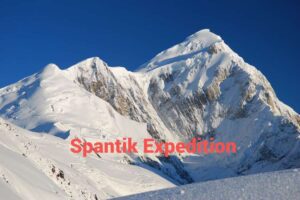
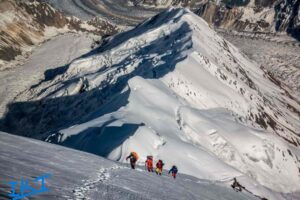
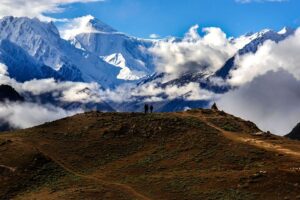
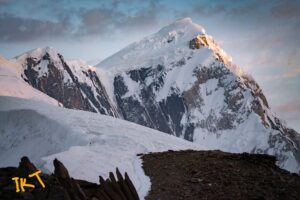
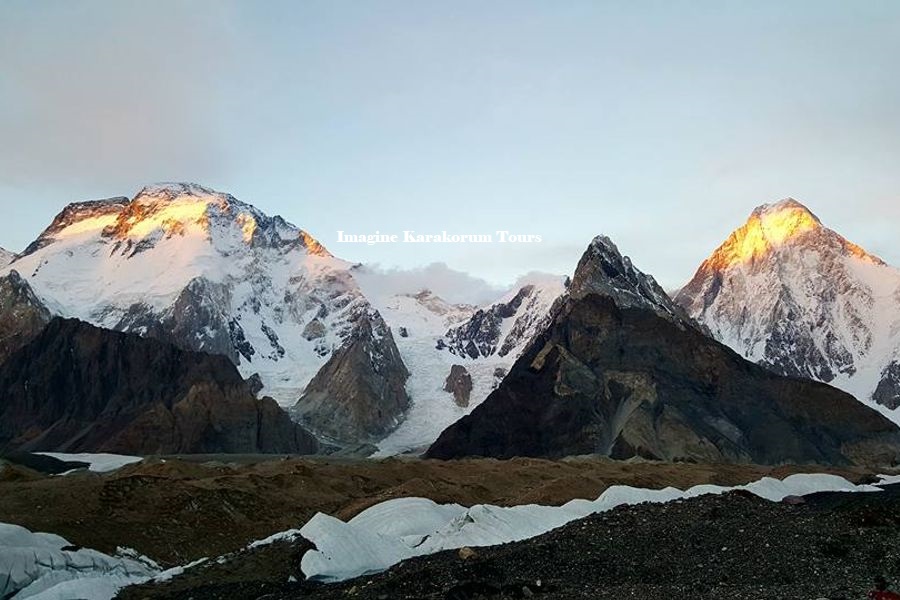
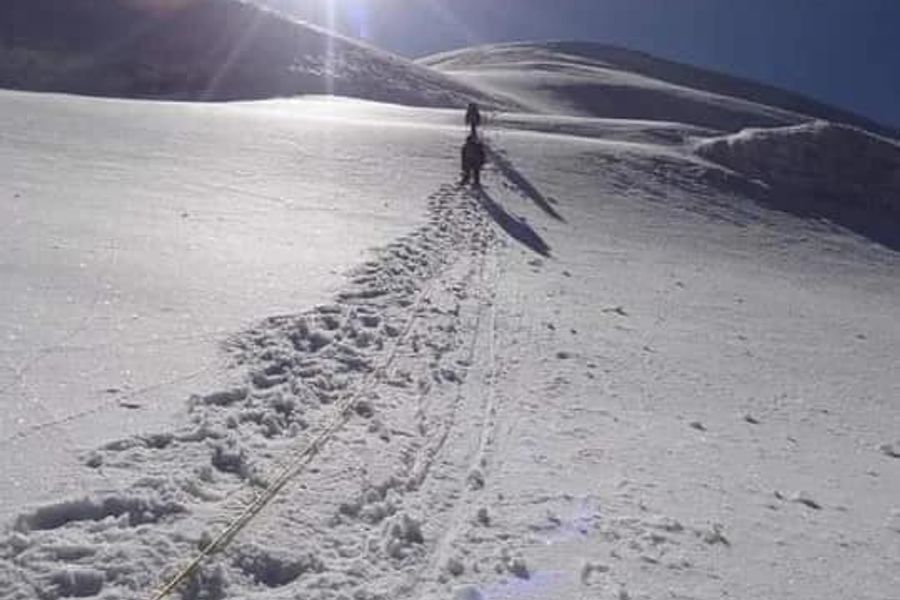

There are no reviews yet.